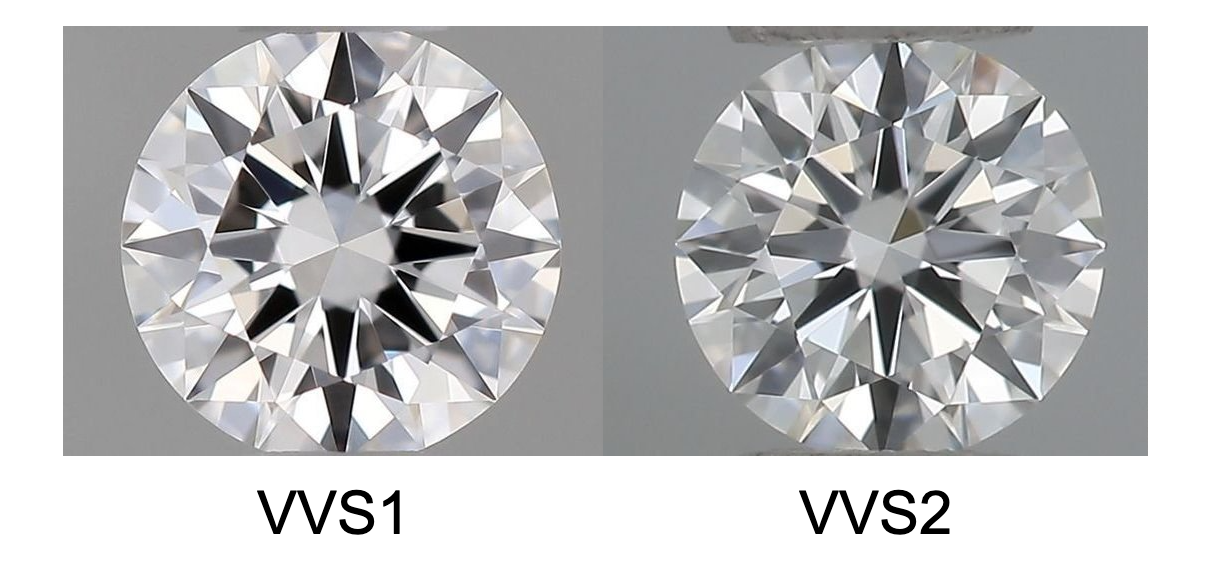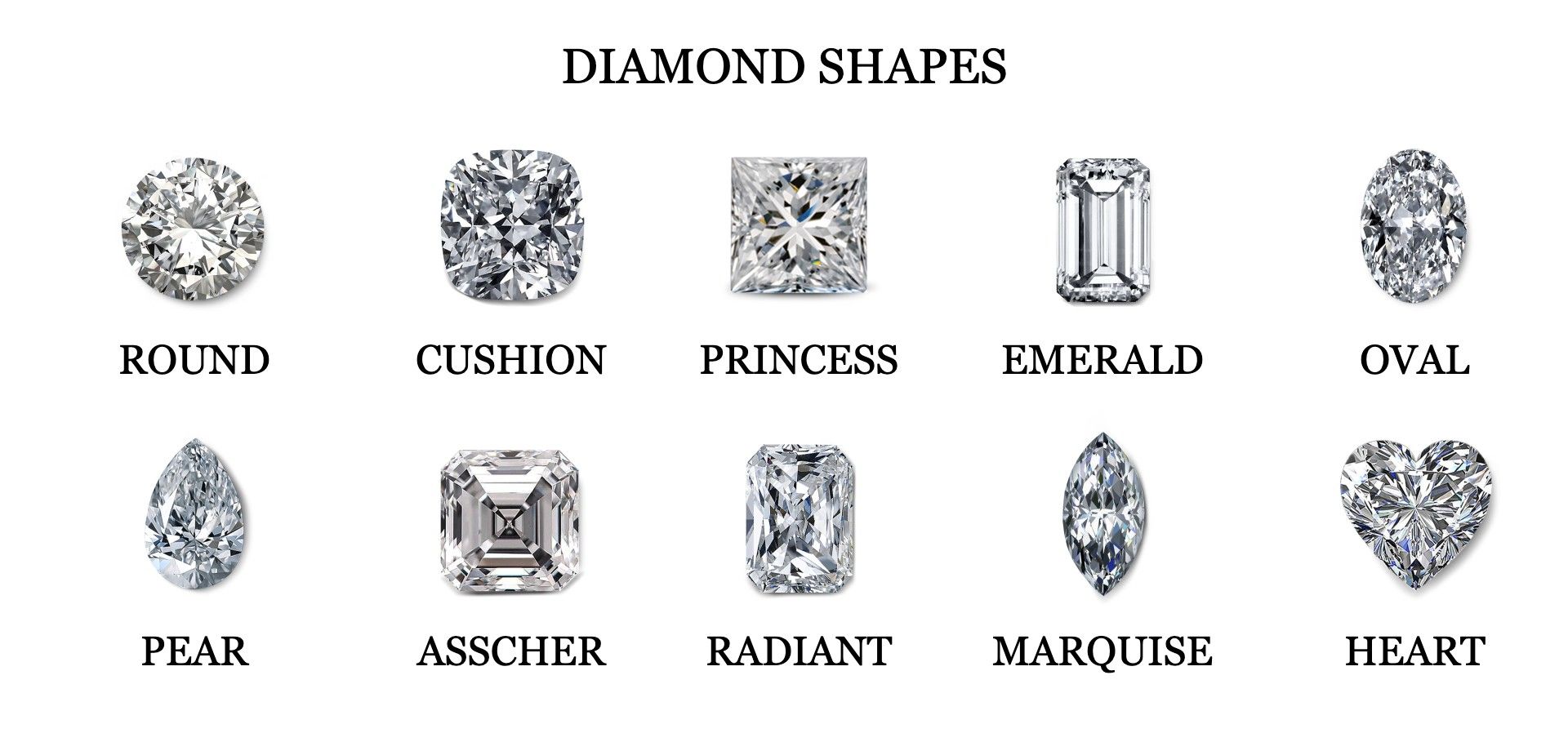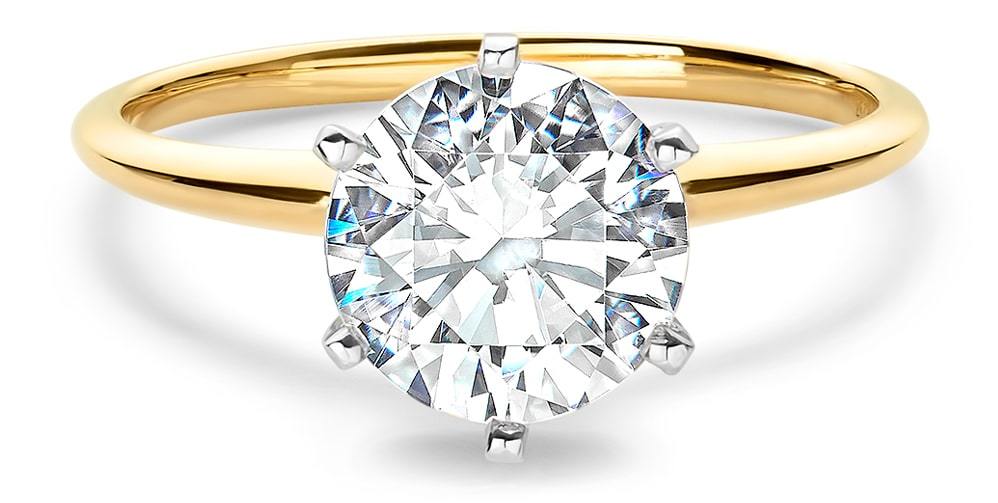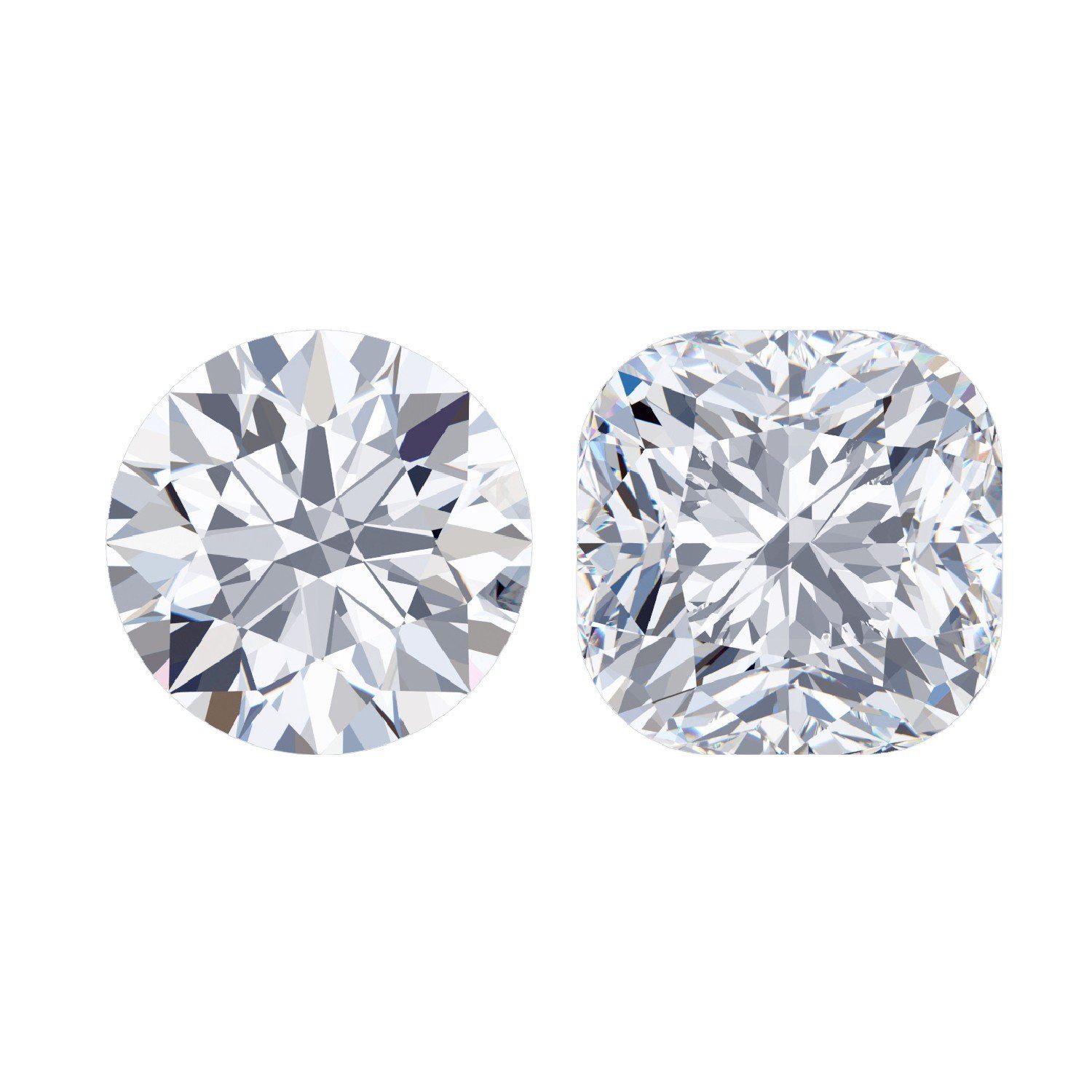Clarity Grades: VVS1 and VVS2 Diamonds

If you're shopping for a diamond or have heard "VVS diamonds" name-dropped in a song but aren't sure what they are, you've come to the right place. Here we will break down what a VVS diamond is and how to buy the perfect stone.
Clarity Basics
What Is Diamond Clarity?
Diamond laboratory reports describe at least four quality features: Color, Clarity, Cut, and Carat weight. These traits are known as the 4 Cs of Diamonds. Diamond value is dictated by how high or low it scores in each area.
Clarity focuses on describing a stone’s internal and external defects. Depending on the amount, placement, and type of imperfections present in a diamond, it will receive a higher or lower grade. Too many imperfections can affect the beauty and appearance of the stone.
Diamonds are observed under controlled light conditions with magnification tools to be graded. It’s almost impossible to determine a diamond's clarity grade with the naked eye.
The Clarity Scale of Diamonds

Clarity is described using a scale of 6 groups and eleven grades.
Although the Clarity scale stretches to the Included 3 grade—which describes a heavily included diamond with evident imperfections—many diamond and jewelry brands offer a limited range of Clarity grades. At Ritani, you will find diamonds with grades that stretch from FL to SI2. Lower clarity grades pose a higher risk to the integrity of the stone. The presence of too many defects makes a diamond more prone to damage.
These imperfections are officially called Clarity characteristics.
Internal Characteristics

Also referred to as inclusions, internal characteristics are a category that includes thirteen types of defects or imperfections that do not reach a diamond’s surface.
External Characteristics

External characteristics, also called blemishes, are superficial imperfections. In most cases, these imperfections are a result of the diamond cutting or setting process and were kept to avoid sacrificing carat weight. And in some instances, blemishes can be caused during the polishing process. Shown above are polish wheel marks on a diamond.
Very Very Slightly Included Diamonds
The VVS Group
VVS stands for Very Very Slightly Included. This group includes two grades: VVS1 and VVS2.
As the name implies, a VVS grade diamond, will present minimal and very tiny internal characteristics (inclusions) that are only visible under 10x magnification.
VVS1 and VVS2

Both Clarity grades belong to the same group, which means they are very similar. VVS1 is the higher grade, and VVS2 is the lower.
So, what’s the difference between VVS1 and VVS2? The parameters to determine whether a diamond gets one grade or the other, are related to the number and location of the inclusions.
Under 10x magnification, VVS1 diamonds will only have inclusions visible from the pavilion (the lower portion of the diamond). VVS2 diamonds will have small inclusions on the table, making them more obvious, under 10x magnification.
VVS1 and VVS2 diamonds will appear completely clean in ordinary conditions to the human eye. The inclusions present in VVS diamonds are not visible without the aid of a loupe or a microscope. It would be impossible to tell the grades apart just by looking at them.
Should You Buy A VVS Diamond?
The VVS group is the second highest in clarity. VVS1 and VVS2 cost less than FL or IF diamonds, but they are still expensive grades.
Buy a VVS diamond if you:
- Like the idea of getting a diamond that’s rare and exclusive.
- Want your stone to be as close to perfect as possible—without paying the premium of a FL or IF grade.
- Are considering an emerald-cut or Asscher-cut diamond. These step-cut stones show inclusions more easily than other diamond shapes, making a quality clarity grade essential.
- Can afford it. A VVS clarity grade commands higher prices.
- Are treating your diamond purchase as an investment. Diamonds with high Clarity and Color grades are less common than those with lower grades. Scarcity is a driving factor for appreciation.
- Don’t mind not seeing the difference. You might see your friends’ engagement rings have bigger diamonds that look similar to yours and cost the same or even less than your center stone. Beware that you won’t be able to tell the difference between VVS, VS, and maybe even SI1 diamonds.
How To Save Up On a VVS Diamond
Everybody wants to achieve some level of perfection in their lives. Pursuing this ideal in the form of a VVS diamond is a noble desire. Treating yourself or surprising a loved one with such a high-quality stone will be extremely rewarding.
Here are four tips to maximize your budget and get that VVS rock:
1. Size Down
Many people want a diamond with perfect qualities and don’t mind sacrificing a bit of carat weight. If you originally wanted a 1-carat diamond, look for a 0.90 ct or 0.85 ct. You’ll see a significant price drop while the actual radius or overall change in appearance won’t change drastically.
2. Go Lab Grown!
Lab-grown diamonds were made by scientists in a lab; that’s it! The only differences between a lab-grown and an earth-grown diamond are their origin and price tag.
VVS lab-grown diamonds share the same physical, optical, and chemical features as earth-grown diamonds.
3. Add A Little Bit of Color

If you’ve decided Clarity is your top priority, your most desired feature, and you’re not willing to size down or consider a lab-grown diamond, there are still options!
Color can drive prices up and down too. And just like Clarity grades, color is not so easily perceived outside of a lab or under special lighting conditions. Near Colorless grades, G and H are more affordable than Colorless D-E-F.
Warm metals such as yellow and rose gold are perfect for masking the center stone’s yellow tints. You can also be safe with grades I to K using yellow gold.
4. Try Out a Different Shape

The Round cut is the most sought-after diamond shape, the most sparkly, and the most expensive! Consider a less popular cut to save on your VVS diamond. Other cuts come with their own advantages. For example, elongated shapes like the Marquise, Pear, and Emerald cut create the illusion of a higher carat weight.


